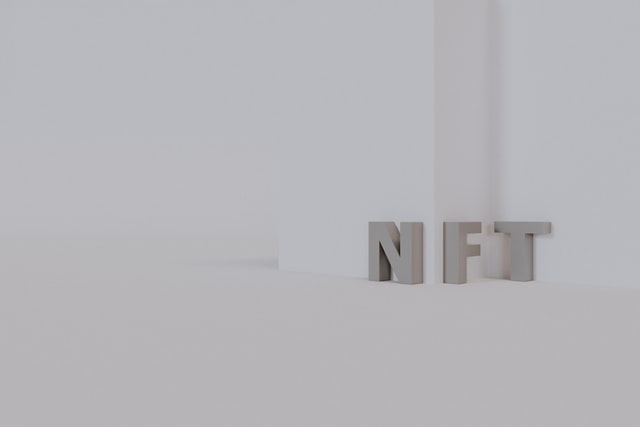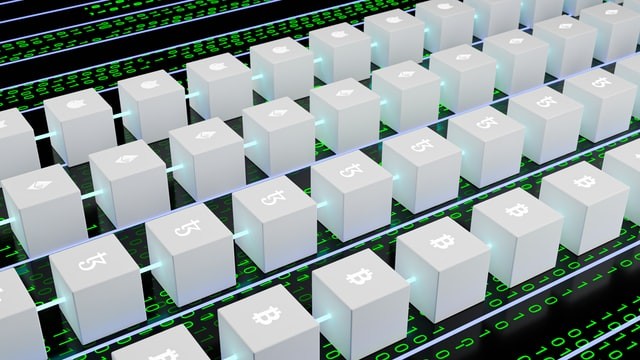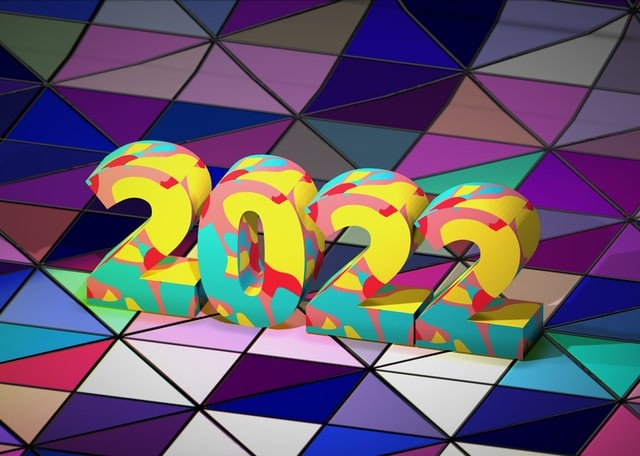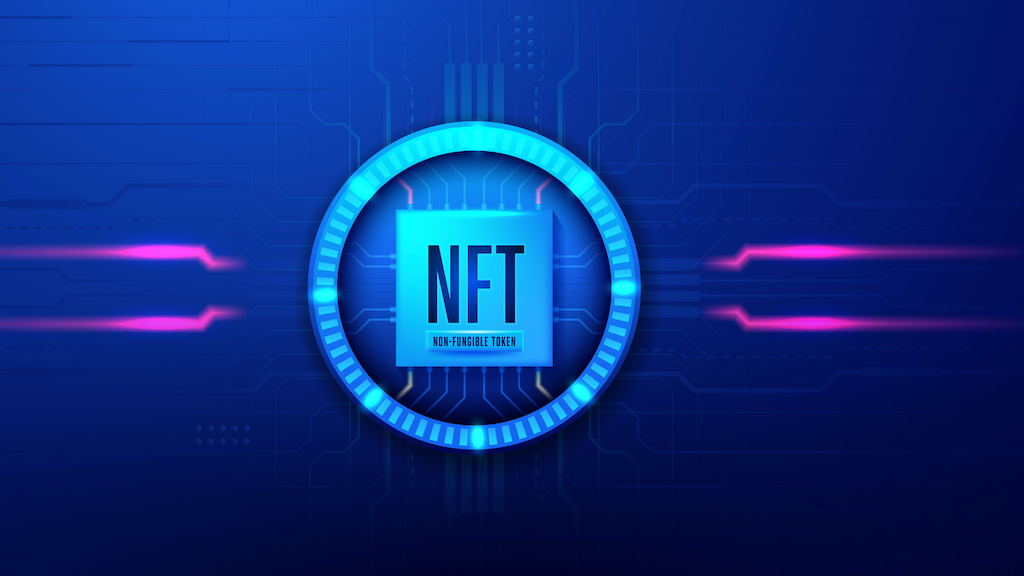Tag: Blockchain
Be it blockchain or traditional software, and every project has a specific life cycle. Without careful planning and execution, achieving the desired success is virtually impossible. Blockchain-related projects are even more complicated because they require different expertise and skill sets.
Thanks to blockchain’s benefits, everybody is trying to jump on the bandwagon and develop something innovative. Unfortunately, not every project is successful, particularly those that aren’t planned and executed by crypto natives.
Compared to traditional Software Development Life Cycle (SDLC), blockchain project development involves different stages. Today we’ll discuss the whole life cycle and emphasize the most important milestones.
Blockchain development: definition
Blockchain development is the process of implementing distributed ledger technology (DLT) in various industries. It implies the creation of applications and systems that operate on that ledger. DLT is synonymous with the technology that securely stores and transfers assets. It’s a transparent and scalable system that cannot be altered.
Apart from creation, blockchain development also involves designing and maintaining the system. In most cases, it also includes smart contract development, the creation of decentralized applications (dApps), or a transition to decentralized finances (DeFi).
Blockchain project development: purpose
Why would anyone require blockchain project development? Its purpose can vary depending on the industry and creators’ goals. The purpose could be the creation of a decentralized system for cryptocurrency or the transformation of the healthcare system. The goal could also be the development of the NFT marketplace, incorporating blockchain into the supply chain, or revolutionizing advertisements.
Regardless of the purpose, blockchain development projects usually involve similar stages and milestones. The particular steps may vary slightly, but the general structure remains the same.
What is the blockchain development life cycle?
The blockchain development process consists of eight main steps:
- Determining the objectives of the project;
- Choosing the consensus mechanism;
- Selecting the platform;
- Designing the architecture;
- Taking care of configurations;
- Building APIs;
- Designing the interface
- Building an MVP.
Determine the main objectives of the project
The main idea of implementing blockchain is that it can solve problems that can’t be tackled with traditional methods. It’s a revolutionary technology that can bring positive change to various industries. However, it’s also expensive and time-consuming. That’s why you should only develop blockchain if it’s the ultimate solution to a particular problem.
Consequently, the first step is determining what problems you’re attempting to solve.
Select the consensus mechanism
The next step is to choose the appropriate consensus mechanism i.e. a set of protocols that will determine the operation of the distributed ledger. Two main types are available: Proof of Work (PoW) and Proof of Stake (PoS).
PoW
PoW is the consensus mechanism that requires immense computing power to validate any actions taken on blockchain. It utilizes miners that solve complicated mathematical puzzles to verify transactions and avert fraudulent activities.
PoS
PoS, on the other hand, is the consensus mechanism that relies on validators rather than miners, requiring less computing power as a result. On PoS blockchains, the owners of a token or cryptocurrency verify the transactions themselves.
Proof of Stake is a preferred consensus mechanism as it isn’t as costly as Proof of Work.
Choose the suitable platform: Ethereum vs Solana vs Polygon
Once you determine the consensus, you should also select the platform for your blockchain project. Multiple platforms are available and the final choice largely depends on the peculiarities of your project. At MaxinAI, we work on Ethereum, Solana, and Polygon networks.
Ethereum
Ethereum is one of the most popular blockchains due to its flexible, diverse, and rich ecosystem. Until recently, the creators would steer away from using it because of its Proof of Work operation and high transaction fees. However, on September 15th, 2022, Ethereum transitioned from PoW to PoS by merging the Ethereum Mainnet with the Beacon Chain.
Solana
Solana is another popular blockchain thanks to its low costs and high-speed operation. It’s great for creating decentralized exchange systems or decentralized games.
Polygon
Unlike Solana and Ethereum, Polygon is a sidechain rather than an independent blockchain. It’s a scaling platform for Ethereum and is mainly used because of low fees.
After choosing the platform, consult your development team about the programming languages that would be suitable for the projects. These could be Rust, Solidity, or traditional software development languages.
Start designing the architecture
At this stage, it’s necessary to determine the blockchain’s architecture and start designing it. The choice here falls down to permissionless and permissioned blockchains. The former is a blockchain network that doesn’t require authorization for entry – you can freely make transactions without anybody else’s approval. The latter has ‘security guards’ who determine which group of people can enter the ecosystem, participate in the governance, and have access to basic functions.
You can also choose between public (accessible for everyone) and private (requires permission) blockchains. Public blockchains are usually utilized for large projects, such as cryptocurrency, while private blockchains are more suitable for companies or decentralized autonomous organizations (DAOs).
Configure the application carefully
The next step is to start configuring the application. This is where you start implementing permissions, block signatures and address formats. Here, you should ensure everything is how it should be because this information won’t be modifiable once it gets to the blockchain.
Take your time, look through the previous steps once again, and ensure you selected each stage accurately. Utilizing consulting services or talking to your in-house/outsourced development team could also be useful.
Build new application programming interfaces (APIs) or use existing ones
APIs are basically middlemen between two different applications. In this case, APIs ensure that the application will operate properly on the blockchain network. They are essential for retrieving data, creating key pairs, or undertaking auditing capabilities.
You can build APIs from scratch or use existing ones. If the project timeline is tight, it’s better to use existing APIs. If you have the luxury to create them and your project requires customized APIs, you can go ahead and build them from scratch.
The APIs that are required for any blockchain project are as follows: smart contract management, key management, the generation of addresses and keys, as well as the management of the smart asset lifecycle.
Design the interface
Naturally, you can’t run a blockchain application without an interface. At this stage, you should start designing the user and admin interfaces. Once again, programming languages should also be selected depending on the project’s peculiarities and your development team’s competencies.
Build a Minimum Viable Product (MVP) and test your project
The final milestone in the blockchain project development life cycle is the creation of the MVP. It’s the most basic version of the blockchain application or system, allowing the developers and creators to see whether the project is viable. It’s mainly used to identify existing issues and test the functionalities. Once the MVP is verified and approved, it’s possible to start incorporating more advanced features.
Starting with a completed project would be nonsensical as it would be a waste of time. The basic outline is enough to determine the future steps in the project.
Things to remember about the blockchain development process
The blockchain development life cycle isn’t simple – each stage requires undivided attention, careful planning, and a creative attitude. For the successful execution of the project, you need a team of developers that aren’t afraid to think outside the box and implement unconventional approaches.
That’s why it’s a good idea to turn to outsource and consult MaxinAI about your project. You’ll get access to talented crypto native developers that know how the project life cycle works. You’ll receive much-needed consultation, transparent communication, and excellent end results.
Contact us today for a successful blockchain project tomorrow!
MaxinAI is constantly growing and evolving, extending its chain of partnerships day by day. This time, we collaborated with C-Devs to develop an innovative blockchain solution for a client. Thanks to successful outcomes and client satisfaction, the partnership between C-Devs and our company turned into a continuous collaboration.
About C-Devs
C-Devs is a software development company that works with companies around the globe. When they are overloaded with projects and lack resources, we provide them with the necessary staff who handle the development from a to z.
Why did C-Devs choose to work with MaxinAI?
C-devs were looking for a tech partner who would have a team of skilled in-house developers and project managers. They also wanted to collaborate with a company that had experience with blockchain development and possessed the expertise that was required for the project. In that process, they stumbled upon MaxinAI.
During the initial stages of negotiations and discussions, it became apparent that our company was a perfect match for their needs. Our lengthy experience with software development, AI, and blockchain is what drew their attention in the first place. We offered high-quality, fast development that would lead to successful outcomes within a reasonable timeframe. Other benefits we provided included:
- The low-tax environment thanks to our location;
- Competitive and affordable pricing;
- Agile project management approach;
- High level of English competency within the whole team;
- High-quality execution.
Considering all these benefits, C-Devs chose to partner with MaxinAI on the given project with the prospects of continuing collaboration in the future. To make sure the client would receive the expected results, we provided C-Devs with a qualified project manager, expert tech lead, and two experienced solidity developers.
The project
MaxinAI partnered with C-Devs on the project that included the development of a smart contract with unique features for the client. The company was launching an innovative non-profit cryptocurrency that had to operate through a customized smart contract.
The goal of the project was to optimize the process of burning the crypto to maintain the value of the coin and implement an account freezing mechanism to prevent the theft of money.
Throughout the whole process, we maintained a clear network of communication with the client and C-Devs. We matched their workflow perfectly thanks to the flexibility of our team. We provided recommendations regarding the best ways to tackle the existing challenges, particularly with burn automation and account freezing functions.
As a result, our developers created innovative solutions, incorporated them into a smart contract, audited it thoroughly, and transferred the final product to the client.
Smart contract development for C-Devs and the client took about a month to complete. The project was medium in terms of difficulty, which is why we were able to deliver it in a short amount of time.
The outcomes of the partnership
The success of the project was demonstrated through a comprehensive smart contract audit. We always use external auditing services to prove the quality of our products. During the audit, we discovered minor errors that were easily corrected. We conducted the audit once more to ensure the final smart contract would be bulletproof.
After the project was completed, C-Devs confirmed that the client was satisfied with the results and they received exactly what they were looking for. The launch of the cryptocurrency was successful because the smart contract operated smoothly. The client hasn’t encountered any issues since the launch.
Here’s how C-Devs described the experience of working with our company:
“Working with MaxinAI is a breeze. They are fantastic and will continue working together for the foreseeable future.”
“MaxinAI delivered the project in a timely manner, and the client was very satisfied with the final results. Their team was agile, responsive, and efficient throughout the engagement.”
The partnership with C-Devs is just one example of MaxinAI’s success stories. We have plenty of satisfied clients, a vast number of completed projects, as well as a team that is always willing to innovate. Partner with us and receive impeccable results consistently!
At MaxinAI, we always come up with state-of-the-art solutions. This time we partnered with C-Devs to help MBMX develop a smart contract with an account freezing function and an automated coin burn.
Launching a cryptocurrency is challenging, especially considering the competition surrounding digital tokens. It’s hard to stand out and deliver a successful product that has increased usability and value for the customers. It’s even more difficult to achieve considerable success in the industry without building a strong foundation first.
This challenge gets amplified even further when we factor in the time-consuming process of coin burn. Most owners burn a specific number of cryptocurrencies, but not all of them are capable of automating the process and increasing efficiency.
More importantly, even the biggest crypto companies are vulnerable to the damage caused by suspicious accounts. Since digital tokens operate on blockchain and lack a central authority, it’s virtually impossible to protect the users from possible attacks and theft. Without an innovative solution, it’s difficult to limit the impact of digital threats.
That’s why it’s so important to launch a cryptocurrency project with a bulletproof smart contract that includes usable features and specifications. It’s essential to come up with a mechanism that would maintain the value of the coin and protect the users at the same time.
But how is it possible to make the coin burn less time-consuming? How can the owner mitigate the effects of suspicious activities?
What is coin burn and why is it necessary?
Coin burn is the process of destroying a certain number of cryptocurrencies. To remove them from circulation, coins are usually transferred to a specific Burn wallet that receives transactions but doesn’t allow withdrawal.
The main reason why it’s necessary to burn coins is to prevent inflation, which is caused by supplying excessive numbers of currencies. By reducing the supply, it’s possible to increase the value of the cryptocurrency or guarantee an increase in value in the future.
Burning the coins manually can be a time-consuming process, as it requires the users or the owner to transfer crypto to the Burn wallet regularly. Manual burning can decrease the efficiency of the contract and create significant vulnerabilities.
Why are suspicious accounts jeopardizing security?
Cryptocurrencies are launched on the blockchain – a secure network that makes it possible to execute safe transactions. Yet even blockchain isn’t impenetrable to digital attacks and malicious accounts that conduct dishonest activities.
Without a central authority overseeing the transactions, suspicious accounts can steal funds from the users or the owners.
Dude Coin – An innovative non-profit cryptocurrency
MBMX recently launched a new cryptocurrency – Dude Coin. It’s a non-profit incentive that aims to help people gain financial stability. The owners collaborate with charities and donate all the earnings to underprivileged individuals, children, and families.
Before launching the Dude Coin, MBMX needed a company of professionals who would help in the process of smart contract development. They wanted to partner with a team that would deliver a high-quality smart contract with innovative features. That’s how MBMX ended up partnering with MaxinAI.
MBMX Universe partners with MaxinAI
MaxinAI is a blockchain development company with extensive expertise in smart contract development, AI, Big Data, and software development. With multiple success stories and comprehensive crypto knowledge, we were an obvious choice for the client.
As MBMX was preparing to launch a new coin, they approached us with the request to develop a smart contract. They wanted to optimize the process of burning the crypto and implement some sort of security mechanism that would prevent the theft of money.
To deliver a bulletproof smart contract, we put together a team of professional developers. We gathered the talents with an innovative mindset to tackle the challenges of the project.
Our solution for the optimization of coin burn was to automate the process using the Gelato Network. We came up with a mechanism that would trigger the network and burn a pre-determined number of coins daily. We also created a BurnWallet contract that would only be accessible to the owner.
To tackle the security challenges, we also implemented an account freezing function in the smart contract. With this function, the owner can freeze the accounts that conduct suspicious activities. For example, if an account steals funds from other users, the owner can freeze their assets and make it impossible to use stolen assets.
In collaboration with our client, we decided to use the Polygon platform. By doing so, we optimized the smart contract and reduced transaction fees (i.e. gas).
To make sure the project would be successful, we had to take the following steps in the process:
1. Receiving the requirements from the client to plan the project accurately;
2. Working on the written documentation required for the smart contract and confirming the details with the client;
3. Creating an initial version of the smart contract and deploying it to the Testnet;
4. Conducting an external audit of the smart contract and correcting any deficiencies;
5. Showing the smart contract to the client and receiving final requirements;
6. Auditing the smart contract once again to confirm that changes were implemented correctly;
7. Deploying the final smart contract on Mainnet and transferring ownership to the client.
Throughout the whole process, we maintained a clear network of communication with the client. We provided recommendations regarding the best ways to tackle the existing challenges, particularly with burn automation and account freezing function.
Smart contract development for Dude Coin took about a month to complete. The project was medium in terms of difficulty, which is why we were able to deliver it in such a short amount of time.
The success of the project was demonstrated through a comprehensive smart contract audit. We always use external auditing services to prove the quality of our products. During the audit, we discovered minor errors that were easily corrected. We conducted the audit once more to ensure the final smart contract would be bulletproof.
By auditing the smart contract before launching it to the blockchain, we empowered the client to showcase their reliability and build trust among their customers.
At the end of the project, the client confirmed that all of their requirements were successfully implemented.
Next steps in our partnership
MaxinAI and MBMX are continuing their partnership. With the trust we built throughout the previous project, we’re taking new steps toward the future of our partnership. This time we’re working on a project that includes the development of a unique ERC20 smart contract.
Do you want your project to be just as successful as the Dude Coin? Schedule a consultation today, get started with smart contract development and we’ll help you build a strong foundation for your project!
Blockchain technology is the best solution if you want to transform your company digitally. It has efficiently produced robust impacts in the technological world since its start.
Programs such as smart contracts and decentralized applications (DApps) leverage blockchain technology to offer practical solutions for various sectors. The good news is that firms can embrace it without spending much money. This sounds pretty fantastic. Many firms still, nevertheless, fall short of creating magic and getting the most out of it.
Decentralized apps and smart contracts are two technologies made for distinct tasks, even though they are still regarded as being comparable. We’ll highlight some fundamental differences between the two blockchain technologies in the paragraphs below. Read on to grab the details below.
What are DApps?
Dapps’ full meaning is Decentralized applications. Peer-to-peer networks are used to power this type of program. For ease, they also include a user interface. These P2P applications function similarly to ordinary apps but are constructed using smart contracts on a blockchain. During the first inception of the blockchain, its creators wished to give their invention more utility. DApps become unique apps linked to blockchains as a result.
DApps are the software section that interplays with the blockchain and controls the state of every user on the network. The fundamental principles of a decentralized app are shown via smart contracts. DApps have the same standard website, or mobile app user interface as any other app. The front end of a decentralized app is developed to depict what users would see, while the back end is designed to accommodate all business logic.
Decentralized apps come in a variety of forms. There are cryptocurrency-specific financial applications first. These DApps let users exchange crypto and manage money via blockchains. Real-world enterprise connection is another field of application. For instance, logistical organizations utilize DApps to manage their shipments and leverage smart contracts to automate numerous procedures.
The most widely used platform for DApps is Ethereum Although; there are some lovely substitutes as well. Some top DApps platforms in 2022 are Tron, Cosmos, EOS, and NEO.
What are smart contracts?
Smart contracts are programs kept on a blockchain network and only operate when specific requirements are met. They are commonly employed to carry out agreements between parties, providing immediate results without wasting time or needing an intermediary. When certain conditions are met, smart contracts are automatic algorithms that streamline the following activity to continue the operation.
They work by executing instructions such as “if, when, then,” which are written into the code of a smart contract. Upon verification, the actions are carried out by a network of member computers.
Transactions between parties, sending updated alerts, registering a car, and issuing tickets are a few of these responsibilities. The blockchain is promptly updated after the procedure is finished with the inclusion of a new block. Additionally, after it has been added to the chain, the transaction data cannot be changed, and only members with access rights can view the results.
Several sectors now make use of smart contracts. For instance, they have gained popularity in finance due to their practicality. Smart contracts provide an alternative to conventional contracts and agreements. Smart contracts are utilized in gaming for in-game purchases, particularly now that crypto and NFTs are more popular. In addition to other fields, smart contracts can be applied in law and real estate.
Due to its significant contribution to the advancement of smart contracts, Ethereum is regarded as the primary smart contract platform. Several excellent alternatives you could consider, some of the leading smart contracts platforms in 2022 are Binance smart chain, Polkadot, Solana, and EOS.
What Characteristics Do DApps and Smart Contracts Possess?
It could be challenging for newbies to comprehend DApps, smart contracts, and other blockchain-powered solutions. If you examine them more closely, they are not all that complicated. These are DApps’ primary characteristics:
- – Tokens are required for users to access DApps.
- – They are based on blockchain.
- – They have decentralized open-source code as well.
- – Listed below are some features of the smart contract:
- – They are based on blockchain.
- – Only under specific circumstances do these programs operate.
- – They run on automated systems.
Listed below are some features of the smart contract:
- – They are based on blockchain.
- – Only under specific circumstances do these programs operate.
- – They run on automated systems.
What is the difference between DApps and smart contracts?
Some of the differences between Apps and smart contracts are listed below:
- – Backend code for decentralized applications is run on the decentralized program; in contrast, a smart contract is a piece of code for a DApp. Simply put, a DApp works by connecting a member with a supplier directly using smart contracts.
- – Decentralized apps, to put it simply, are computer programs that combine smart contracts with a front end to function as a whole. However, smart contracts only make up a minor percentage of DApps.
- – Smart contracts serve as API connectors that link decentralized applications (DApps) with the blockchain; on the other hand, decentralized apps are blockchain-powered sites.
What do DApps and smart contracts have in common?
DApps and smart contracts are automated and run on a decentralized network; no single governing body has any authority over them. Due to their shared use of the Ethereum blockchain, these two systems were once regarded as one. Although they are closely related, smart contracts and DApps are different.
What Function Do Tokens Perform in DApp and Smart Contract Processes?
To utilize a decentralized program, tokens are required. DApps need tokens specific to each DApp even when developed on Ethereum or another blockchain. These tokens effectively serve as a unique form of money. For instance, when playing a video game, you can pay real money to buy in-game cash. To enjoy the functionality of DApps, you must purchase tokens. In contrast to many cryptos, they are also inexpensive and accessible. As a result, using tokens when interacting with DApps is more practical and effective.
Cryptocurrencies and virtual tokens are transferred through smart contracts. Some tokens even function as smart contracts. For instance, the ERC-721 token for Ethereum is a smart contract in and of itself. Not all smart contracts, meanwhile, are tokenized. On Ethereum, there exist smart contracts that can carry out their functions without using tokens.
Frequently Asked Questions (FAQs)
How Do Smart Contracts and DApps Interact the Same Way?
DApps and smart contracts interplay with a blockchain similarly to how classic applications and webpages interplay with their databases. DApps employ smart contracts as an API to connect to a blockchain, whereas a standard app serves as the front end and links to a database through API.
What Are the Differences Between DApps and Smart Contracts?
Smart contracts link DApps to the blockchain. Conversely, DApps are similar to programs or sites connected to a blockchain. Smart contracts operate like an API.
What Characteristics Do DApps and Smart Contracts Possess?
Smart contracts enable the automation of several contracts while maintaining their accuracy and transparency. The costs are also decreased as a result of smart contracts. Decentralized apps (DApps) are those created on the blockchain that is not under the control of a centralized authority.
What Characterizes DApps and Smart Contracts as Similar?
Technologies created and operating on a blockchain include smart contracts and DApps. However, the fascinating question is, how do a DApp and a smart contract interact if they aren’t the same? These two systems are distinct from one another, but they are nonetheless seen as almost the same on the Ethereum blockchain. They are linked to this system, which they use to carry out tasks.
Final Thoughts
Since its inception, blockchain technology has advanced significantly, but the journey is far from complete.
Firms struggling in today’s competitive marketplace can learn how to use blockchain components in their operations effectively, and they will experience advancement. They will not merely make progress, but they will also distinguish themselves from their competitors. To gain benefits, they must start with a solid knowledge of decentralized apps and smart contracts and put those concepts into practice.
Therefore, all a company needs to do to help a brand stick out is comprehend unique features and implement them before rivals do.
The business world is constantly evolving thanks to new technologies. First, it was the internet, then social media, followed by artificial intelligence, and now we have NFTs (non-fungible tokens).
Non-fungible tokens are becoming more and more popular and for good reason. NFTs are a new way to create, own, and trade digital assets. They’re unique, like cryptocurrency, but unlike crypto, NFTs can represent anything from art to real estate. This makes them perfect for businesses that want to add a new dimension to their products or services.
Have you been thinking about adding NFTs to your business but don’t know where to start? In that case, this blog post is for you! We’ll show you how NFTs can benefit your business and how to get started with them.
What is an NFT (non-fungible token)?


An NFT is a type of cryptocurrency that represents a digital asset. The word non-fungible means that each NFT is unique and can’t be replaced by another NFT. This is unlike cryptocurrency, which is fungible, meaning each unit is interchangeable with another unit.
For example, let’s say you have a digital art piece that you want to sell as an NFT. When someone buys it, they’re buying the unique file that represents the artwork. They own that file and no one else can replace it or copy it.
The greatest benefit of NFTs is that they are stored on a blockchain, which is a decentralized network of computers that keep track of NFT transactions. This guarantees that NFTs can’t be counterfeited or double-spent.
Benefits of NFTs for businesses
Now that you know what NFTs are, let’s look at some of the benefits they offer businesses.
New way to generate revenue – NFTs provide a new way for businesses to generate revenue. If you have a digital product or service, you can now sell it as NFT. For example, companies in the music industry can commercialize their songs as NFTs.
Attract new customers – NFTs also offer a way to attract new customers. By offering NFTs, you can tap into a whole new market of potential customers who are interested in this new technology.
Increased engagement – NFT is one of the hottest topics on social media right now. This gives companies a great opportunity to increase their engagement, as people are paying more attention to NFTs right now.
How can businesses get started with NFTs?


It’s time to move to the most important part of this blog post – how can businesses get started with NFTs? How can they boost their operations with this new technology?
Link physical products with NFTs
One way companies can get started with NFTs is by linking physical products to NFTs. For example, if you are in the clothing industry, you can create NFTs that represent your clothing. Customers can then purchase the NFT and receive the physical product or vice versa – receive an NFT after purchasing a physical product.
In this way, you can create a new source of income and attract NFT enthusiasts to your business.
Proof of authenticity
Another way NFTs can be used by businesses is to provide proof of authenticity. This is especially important for businesses that sell products that are prone to counterfeiting, such as luxury goods.
By selling your products as NFTs, you can provide customers with a digital certificate of authenticity that is stored on the blockchain. This not only ensures that the product is genuine but also shows the full history of the product, from manufacturing to sale, giving customers peace of mind.
Luxury brands are seizing the opportunity to verify the authenticity and provenance of expensive assets. For example, LVHM, a luxury goods manufacturer, is developing blockchain authenticity tracking technology so shoppers can check the history of a high-priced item from anywhere in the world.
Use it as access to your services
NFTs are not only made for physical products but also for digital services. If you offer a digital service, such as online courses, NFTs can be used to give customers access to your content.
How could this work? Holders of your NFT could unlock and view your exclusive content or use your services by connecting their crypto wallets to your website and proving that they own the NFT.
This is a great way to increase customer loyalty and engagement, as well as prevent content piracy. Consider how much money Netflix and other US streaming video services lose each year because of password sharing ($6 billion a year, to be exact). NFTs might be the answer to this problem.
Supply Chain Management
NFTs can also be used for the supply chain management. By tracking your products on the blockchain, you can provide customers with a transparent view of your product’s journey, from manufacturing to delivery.
This is not only good for customer relations but can also help you track and manage your inventory more effectively. NFTs can help businesses save time and money by streamlining their supply chain.
Fundraising for expansion
Are you planning to expand your business and wondering how to raise the necessary funds? Before you go to the bank or approach investors, consider NFTs. NFTs can be used to raise funds for business expansion.
One way to do this is by selling NFTs that represent shares in your company. This is similar to how traditional companies sell shares on the stock market; however, instead of selling paper certificates, you would be selling NFTs.
By selling NFTs, you can attract a whole new group of investors who are interested in this new technology.
Conclusion
NFTs are a hot topic right now and offer businesses a great opportunity to increase their engagement and attract new customers. NFTs can be used in various ways, such as providing proof of authenticity, linking physical products with NFTs, or selling NFTs that represent shares in your company. NFTs offer a great way for businesses to streamline their operations and save time and money.
Are you considering using NFTs for your business but don’t know where to start? You are not alone. NFTs are a new technology, and there are not many resources available.
But don’t worry, we can help you. We offer complete blockchain services, from NFTs to smart contracts. We have a team of experts who can help you get started with NFTs and take your business to the next level. Contact us today for a free consultation to learn more.
Request a free consultation
The web is constantly evolving, and with each new iteration comes new opportunities for businesses. Web 3 is the latest stage in this evolution, and it offers a number of advantages for companies that are able to harness its power.
If you’re like most business owners, you’re always looking for ways to stay ahead of the curve. You understand the importance of being an early adopter and know that being late to the game can have a serious impact on your results.
That’s why it’s so important to stay abreast of the latest web developments and to make sure that your business is prepared to take advantage of them.
Let’s take a look at how web 3.0 can impact your business and how to be an early adopter of this game-changing technology.
What is web 3.0?


To understand web 3.0, we must first understand its predecessors – web 1.0 and web 2.0.
Web 1.0
Web 1.0 was the first version of the web and was primarily used to exchange information. In this version, data storage and management are handled by a single computer system without real-time communication between computers. The websites are static, and users can only view the information that is provided to them.
Web 2.0
Web situation began to change with web 2.0 by introducing dynamic web pages. In this version, users are able to interact with the web content and each other in real-time. This interaction is made possible by a number of web technologies such as social networking, blogs, wikis, and video sharing.
Web 3.0
Web 3.0 takes things one step further by adding intelligence to the web. Although it has not yet been fully realized, experts believe that web 3.0 will be the Semantic Web.
The Semantic Web is a web of data that can be processed by machines. This would allow computers to understand the meaning of the information on the web and make decisions based on that information.
In this version, web-based will be able to learn and understand the needs of users. This understanding is made possible by the use of artificial intelligence (AI) and machine learning algorithms. The result is a web that is more personalized and tailored to the needs of each individual user.
What does web 3.0 mean for businesses?
The opportunities presented by web 3.0 for companies are enormous. Let’s explore some of the ways your business can benefit from this new web technology.
Improved transparency and trust


Web 3.0 technologies can help to improve transparency and trust between businesses and their customers. The use of blockchain technology, for example, can help to create a tamper-proof record of transactions. This would allow businesses to build more trust with their customers by providing them with a transparent view of their business dealings.
A business could use blockchain to provide customers with a real-time view of their supply chain. Thanks to this, customers can see where their products are at each stage of the production process and be sure that they get what they paid for.
Increased security
Nothing is more important to a business than the security of its data. Web 3.0 technologies can help to improve the security of your data by decentralizing it.
In a centralized system, all your data is stored in one location. This makes it vulnerable to attack. In a decentralized system, your data is spread across a secure ledger. This makes it much more difficult for hackers to access and manipulate your data.
Affordable infrastructure
The infrastructure required to run a web 3.0 application is much cheaper than the traditional web infrastructure. This is because web 3.0 applications are decentralized.
They do not require expensive servers and data centers. Instead, they can be run on a network of computers provided by volunteers. This makes web 3.0 applications much more affordable to develop and maintain.
Improved user experience
Web 3.0 technologies can help to improve the user experience by providing a more personalized web. The use of AI and machine learning algorithms can help to provide each user with a unique experience that is tailored to their needs.
The result is a web that is more user-friendly and easy to use. This can lead to increased customer satisfaction and loyalty.
More customer insight


The use of web 3.0 technologies can also help businesses to gain more insight into their customers. How?
Arguably, with Web 3.0, businesses can provide businesses with more data about their customers without violating their privacy. This is because web 3.0 technologies can help to anonymize data.
This means that businesses can collect data about their customers without them having to provide any personal information. This data can then be used to improve the products and services that businesses offer.
Better data searchability
Businesses can also use web 3.0 technologies to make their data more searchable. The use of semantic web technologies can help to create a web of data that can be easily searched by machines.
This would allow businesses to find the information they need quickly and easily, eliminating the need to conduct manual data searches as well as wasting money and resources.
Saying goodbye to third-party intermediaries
Business owners know how costly and time-consuming it can be to deal with third-party intermediaries. But we’ve got some good news. With web 3.0, businesses can conduct transactions directly with their customers, without the need for a middleman.
What does this mean? This means businesses can save money on transaction fees, as well as get their products and services to market faster, ultimately building stronger relationships with their customers.
How to prepare for web 3.0


Now that we’ve discussed some of the ways web 3.0 can impact businesses, you might be wondering how you can prepare for it if it’s still in its early stages of development.
Here are a few things you can do to get started:
Educate yourself about the web 3.0 technologies – This blog may be your first step, but there is much more you can learn. If you want to stay ahead of the curve, it’s important to educate yourself and your team about web 3.0 technologies and how they work.
Monitor web 3.0 developments – By keeping an eye on web 3.0 developments, you’ll be able to better understand how the technology is evolving and how it can be used to benefit your business.
Learn more about blockchain – Blockchain is one of the key technologies that make web 3.0 possible. If you want to get ahead of the game, it’s important to learn more about how blockchain works and how it can be used to benefit your business.
Start experimenting with web 3.0 technologies – While web 3.0 is still in its early stages, there are already some solutions like smart contracts that businesses can experiment with.
Conclusion
Web 3.0 has the potential to revolutionize the way businesses operate. By providing a more personalized web, improved data searchability, and the elimination of third-party intermediaries, web 3.0 can help businesses save time and money while building stronger relationships with their customers.
This can serve as a primer for business owners who want to stay ahead of the curve and be prepared for web 3.0. But remember, web 3.0 is still in its early stages, so don’t expect everything to happen overnight. Just keep an eye on web 3.0 developments, educate yourself and your team about the technology, and start experimenting with web 3.0 solutions. Doing so will put you in a good position to take advantage of web 3.0 when it matures.
Do you want to know more about the 3.0 web solutions that can benefit your business? Our team already offers services such as smart contract development, IoT or artificial intelligence services, so feel free to contact us and we’ll be happy to chat.
In January 2009, an anonymous person or group of persons created a decentralized currency called Bitcoin that used underlying blockchain technology. Bitcoin enabled secure peer-to-peer transactions without the need for a third party, such as a bank, to monitor them.
Who would have thought that in a matter of decades this technology would have given rise to even more revolutionary applications?
Fast forward to today, and smart contracts are the next big thing in the world of blockchain and not only. Due to the advantages that they offer, smart contracts are being applied in a variety of industries.
But what exactly are smart contracts and why are many companies turning to them? That is exactly what we will discuss in this article.
What are smart contracts?


A smart contract is a digital protocol that facilitates, verifies or enforces the negotiation or performance of a contract. To put it in simpler terms, smart contracts are computer programs that automatically execute the terms of a contract.
These contracts are stored on a blockchain, which is a distributed database that contains a growing list of records, called blocks. Each block is linked to the previous one and contains a timestamp and transaction data.
What differentiates smart contracts from the traditional contracts that we are used to is the fact that smart contracts are self-executing. This means that once the conditions of the contract are met, the smart contract will automatically execute the predetermined actions.
For example, let’s say that a company enters into a smart contract with a supplier to purchase 100 widgets. The smart contract will automatically place the order with the supplier and once the widgets are delivered, it will release the payment to the supplier.
This makes smart contracts a more efficient and secure way to conduct transactions.
How do smart contracts work?
The above example sounds great in theory, but how do smart contracts actually work?
To write a smart contract, a developer needs to use a programming language called Solidity. Once the smart contract is written, it is uploaded to the blockchain.
From there, it can be accessed by anyone who has an internet connection. The contract will be stored on a decentralized network of computers and will be tampered-proof.
Once the smart contract is uploaded, the parties need to sign it with their digital signatures. After that, the smart contract is considered binding and can be executed automatically.
Advantages of smart contracts
The above content gave you a good idea of what smart contracts are and how they work with a glimpse of their advantages, but smart contracts are much more than that. Let’s take a deeper look at the benefits that smart contracts can offer businesses.
Security


One of the main advantages of smart contracts is that they are more secure than traditional contracts. Smart contracts are stored on a blockchain, which is a decentralized and tamper-proof network. This makes it impossible for someone to change or delete the smart contract.
In addition, smart contracts are executed automatically, which means that there is no room for human error.
Speed and efficiency
Another great advantage of smart contracts is that they are faster and more efficient than traditional contracts. With smart contracts, there is no need for a third party, such as a bank, to verify or execute the contract. This saves a lot of time and hassle.
Storage & Backup
Smart contracts record all data related to a transaction on the blockchain. This data is immutable, meaning it cannot be changed or deleted. This provides businesses with a secure way to store data related to their transactions. Since smart contracts are stored on a blockchain, they are also backed up on every node on the network. This makes smart contracts a secure and reliable way in case of data loss.
Transparency
As we already mentioned, smart contracts are stored on a decentralized network. This means that anyone with an internet connection can see the smart contract. This transparency helps build trust between the parties involved in a smart contract, such as with customers and business partners.
Smart contract use cases
All these advantages make smart contracts a great tool for companies. Use cases can differ from industry to industry and company to company. So, let’s take a look at some of the most common smart contract use cases.
Digital identity


The importance of digital identity has been increasing in recent years and smart contracts can play a big role in this. Smart contracts can be used to store digital identity data, such as biometric data, in a secure and tamper-proof way.
This data can then be used for KYC (know your customer) processes or for authentication purposes.
Automated billing
Another great smart contract use case is automated billing. Smart contracts can be used to automate the invoicing process. This can save a lot of time, as businesses no longer need to send invoices manually.
In addition, smart contracts can also be used to automatically release payments once an invoice is paid. This makes the whole process more efficient and secure.
For example, a store that sells products online can use a smart contract to automatically send an invoice to the customer once the order is placed. The smart contract can also be configured to release the payment to the store once the invoice is paid.
Supply chain management
Smart contracts can be used to streamline supply chain management. For example, smart contracts can be used to track the movement of goods and to automatically trigger payments. This can help businesses save a lot of time and money.
Asset management
Another common smart contract use case is asset management. Smart contracts can be used to store and track ownership of assets, such as land or property. This can help businesses save time and money on paperwork. It can also help prevent fraud.
Industries that can benefit


Now that we’ve seen some of the most common smart contract use cases, let’s take a look at which industries can benefit from smart contracts.
Smart contracts can be used in any industry where there is a need for secure and efficient contract management. However, smart contracts are particularly well suited for the following industries:
Banking and financial services – Smart contracts and blockchain technologies can disrupt the banking and financial services industry by providing a more secure and efficient way to manage contracts. For example, smart contracts can be used for KYC processes, automated billing, and asset management.
Insurance – Smart contracts are one of the greatest way for insurance companies to streamline their operations. Automating the claims process, for example, can help insurance companies save a lot of time and money.
Healthcare – Healthcare is becoming one of the most innovative industries when it comes to the adoption of new technologies. Smart contracts can help streamline many processes in the healthcare industry, from patient data management to claims processing.
Real Estate – When it comes to documents and records, the real estate industry is notoriously paper-heavy, creating some awkwardness for all parties involved in a transaction. Smart contracts can help streamline many of the processes involved in buying and selling property, from title transfers to mortgage approvals and rental agreements.
Supply Chain Management – In supply chain management, smart contracts can serve as a vital element by automatically recording the transfer of goods, ensuring that all operations are carried out as planned, obligations are met, and much of the paperwork is eliminated.
Government – Some may be surprised to hear that government agencies can also use smart contracts. However, many government services can be automated using smart contracts. For example, smart contracts can be used for identity management, land registration, and tax collection. All of this can help government agencies save time and money, and for citizens, it can mean more efficient and streamlined services that don’t cause as much frustration.
Conclusion
As we already understand, Smart contracts are important because they represent a new way of doing business that is more efficient and secure. They can be used to automate many processes, which can save time and money for businesses. In addition, smart contracts are based on blockchain technology, which is a secure and tamper-proof distributed ledger.
This makes them ideal for businesses that need to store and manage sensitive data. All of this makes smart contracts a very powerful tool that can be used in a variety of industries. If you think your business could benefit from smart contracts, then it’s definitely worth exploring further.
Looking for a way to streamline your business operations with smart contracts? Contact us today for a free consultation and we’ll be happy to help you get started.
Blockchain technology is one of the most disruptive technologies in recent years. It has the potential to revolutionize a wide range of industries, from finance to healthcare to manufacturing.
Blockchain has seen a lot of changes over the past few years, but the upcoming trends are a good indicator to know that this technology will be more advanced than ever. In 2022, we can expect to see even more innovative applications of the technology as businesses and organizations continue to explore its potential. Here are some of the most exciting blockchain trends we can expect in the next few years.
What is Blockchain technology?


Blockchain is a distributed database that allows for secure, transparent and tamper-proof transactions. It was first proposed by an anonymous person or group of people under the name Satoshi Nakamoto in 2008. The technology is used to create digital currencies like Bitcoin and Ethereum. However, that is not all it can be used for. The digital ledge has the potential to revolutionize many different industries by providing a secure and transparent way to conduct transactions.
How does the blockchain work?
As we mentioned, blockchain technology is best known for its use in Bitcoin and other cryptocurrencies, but the technology has many other potential applications.
When a transaction is made on the digital ledger, it is verified by a network of computers. These computers are known as “miners” and they use their processing power to verify transactions. Once a transaction is verified, it is added to a block.
This process guarantees a decentralized and secure system, as there is no central authority that can manipulate the data. This is the main reason why blockchain is often seen as a game-changer for many industries.
Benefits of Blockchain technology
Blockchain technology has a variety of benefits that include:
- Increased security: Blockchain is the perfect system to keep your data safe because it is decentralized. There is no central authority that can hack this database and alter the information, making you even more protected than before.
- Transparency: Such technology allows for transparency and accountability because all transactions are verified and recorded by multiple computers . This makes it easy to track information and prevents data tampering.
- Efficiency: When it comes to efficiency, blockchain is a surefire winner. Not only can the technology streamline processes and increase your productivity but also because there’s no need for third-party intermediaries in these instances.
- Cost savings: With a digital ledger, companies can track and share data in ways that are faster (less time spent on processing) and cheaper (no middlemen). Blockchain-based currencies like Bitcoin have proven the viability of paying online without going through banks or payment intermediaries which take an average 25% commission fee per transaction.
- Fraud prevention: Blockchain technology is set up in a way that prevents fraud. By recording every transaction that takes place on the blockchain, it creates an audit trail that can be traced back to the original input. This makes it difficult for criminals to commit fraud because since the system is decentralized, there is no one single point of failure that hackers could target in order to exploit it.
2022 Blockchain Trends in Business


Now that we’ve answered the question, “What is Blockchain Technology?” it’s time to take a closer look at some of its trends in business that we can expect to see in 2022.
Further popularization of digital currencies
Blockchain technology has already disrupted the financial industry by enabling the use of digital currencies like Bitcoin.
When this concept was first introduced, it was met with a lot of skepticism, but today we see countries like El Salvador making Bitcoin its official currency. Or China working on its own digital currency.
This is just the beginning of a larger trend that will see digital currencies becoming more and more popular in the years to come.
The rise of decentralized applications (dApps)
As we mentioned earlier, the technology can be used for various purposes other than cryptocurrencies. One of these applications is decentralized applications or dApps. These are applications that run on a decentralized network of computers rather than a single server.
This makes them more secure and efficient, as there is no central point of failure. For example, PancakeSwap, Axie Infinity and Katana are all examples of famous dApps that are currently in use.
We can expect to see more and more dApps being developed in the years to come as businesses start to realize the benefits they offer.
Increased use of smart contracts
Smart contracts are another application of blockchain technology that is seeing increasing use. These are contracts that are executed automatically when the terms of the contract are met.
This eliminates the need for third-party intermediaries, as the execution of the contract is handled by the blockchain network itself. This not only speeds up the process but also reduces costs.
It can be used for a variety of purposes, such as real estate transactions, supply chain management, payment processing, and more.
The rise of Metaverse


Metaverse is a decentralized virtual world that runs on blockchain technology. Although it is a relatively new venture, it has a lot of potential and is quickly gaining popularity.
In Metaverse, users will be able to create avatars, buy virtual land, and even create their own digital assets.
What’s more, some Metaverse platforms have their own decentralized exchange, which will allow users to trade these digital assets with each other. This could potentially revolutionize the way we interact with each other online.
For businesses, Metaverse presents a unique opportunity to create and promote their own digital assets. And for consumers, it provides a fun and convenient way to interact with others online.
NFTs increasing in popularity
NFTs, or non-fungible tokens, are digital assets that are stored on the blockchain. Unlike Bitcoin or other cryptocurrencies, which are interchangeable, each NFT is unique and cannot be replaced by another.
This makes them ideal for storing items of value that need to be authenticated, such as artworks, collectibles, and vouchers.
The popularity of NFTs is increasing rapidly, as businesses and consumers alike begin to see the benefits they offer.
Many NFT creators went from seeing it as a project to seeing it as a company. That’s why, some NFTs now have a real roadmap with time-related goals, full-scale team members, and partnerships with other companies.
Blockchain and IoT integration
One of the most exciting possibilities for blockchain technology is its integration with IoT or the internet of things. This is the network of devices that are connected to the internet and can communicate with each other.
By combining blockchain technology with IoT, we can create a secure system in which devices can interact with each other without the need for a third party. This could have a huge impact on many industries, including healthcare and logistics.
Blockchain and AI integration
Artificial intelligence (AI) is a process of programming computers to make decisions for themselves. Blockchain is a digital ledger that records and stores all online transactions.
The potential for blockchain and AI integration is significant. Part of the AI decision-making process remains a black box for investigators. It could be used to verify and track the AI decision-making process, providing transparency and a peek into the “black box”.
What industries will be most disrupted by blockchain in 2022?


The use cases for blockchain are endless, and it is likely that many industries will be disrupted by it in the years to come. Here are a few of the most likely candidates:
- Finance: Blockchain has the potential to revolutionize the way we do banking and payments. It could also help reduce fraudulent activities by providing a secure and transparent way to record transactions.
- Healthcare: Blockchain could be used to securely store and share patient medical records. It could also be used to track the movement of pharmaceuticals through the supply chain.
- Supply Chain Management: It could be used to track the movement of goods through the supply chain. This would improve transparency and efficiency while also reducing the risk of fraud.
- The retail sector: Blockchain could be used to track the movement of goods and manage inventory. This would improve stock management and reduce the chances of out-of-stock items. Likewise, NFTs could be used to track the provenance of luxury items and ensure that they are not counterfeit.
- Education: Blockchain could be used to store academic records securely and provide proof of authenticity. This would make it difficult for people to forge their qualifications.
Conclusion
Blockchain is a very versatile technology with the potential to disrupt a wide range of industries. In the coming years, we can expect to see more businesses and consumers using this technology in their everyday lives.
The trends we mentioned are just a glimpse into the potential of blockchain technology. There are many other exciting possibilities that we have not yet explored. We can only wait and see what the future holds for this incredible technology.
Do you want to take advantage of blockchain technology and its potential? Our team is here to help. We have the experience and expertise to help you navigate the world of blockchain. Schedule a free consultation today to learn more about how we can help you.
Decentralized finance or DeFi is a blockchain-based financial system that uses cryptocurrencies and blockchain to manage financial transactions instead of relying on central financial intermediaries such as banks, brokerages, exchange houses, etc.
DeFi is growing at a very fast phase. The industry has reached $ 100 billion and its users are over a million now, which shows people’s motivation and enthusiasm to participate in such a system.
With such a surge in popularity and adoption rate, people are wondering if DeFi may be the next big thing in global finance. In this article, we’ll take a look at the reasons why decentralized finance can disrupt traditional banking.
Accessibility


Unlike traditional banking, Decentralized Finance offers users simplified and easier access to banking services. It also removes barriers by eliminating the need to share personal information before accessing services.
For example, with the traditional banking system, a person in need of a loan would have to go through a bureaucratic process and waste a lot of time, however, in the case of DeFi, such operations require only several clicks and are accessible from anywhere and at any time. This approach not only makes the process seamless but also affordable, giving users full control of their assets.
Transparency
Because DeFi is powered by blockchain technology, all transaction data is transparent and available to everyone. Such auditable nature of DeFi allows parties to properly assess risks and inspect portfolios
Therefore, DeFi’s open source infrastructure is always available for audit, with every transaction recorded on the blockchain. This not only serves as an important foundation for financial markets but also plays an essential role for investors.
By understanding what types of transactions are taking place, DeFi provides its users with a high level of trust, a sense of security and authenticity.
Exchange


DeFi simplifies the exchange process as it involves peer-to-peer transactions without the need for a middle man or middleman. DeFi platforms are equipped with machine learning algorithms that help detect fraud and identify other risk factors.
With the help of smart contracts and analysis on loan sources, credit levels, etc., DeFi platforms speed up the exchange and lending process between two parties. That’s why DeFi exchange and lending is one of the fastest-growing use cases in the industry.
Innovation
Decentralized finance is one of the most innovative industries. Built on blockchain technology, DeFi solutions are innovative by nature. However, in addition to that the industry is constantly looking to expand its capabilities and offerings with innovative solutions.
Exactly such groundbreaking thinking made DeFi a perfect use case for doing everything from lending to insurance. And as the decentralized finance becomes more attractive to large investors and businesses, we are more likely to see more innovative and complex uses of this space.
Conclusion
Decentralized finance is receiving increased recognition from users, as well as potential partners, such as international payment providers. It has grown so much that even traditional financial institutions recognized the potential of DeFi.
Although DeFi is still considered a new and experimental solution, everyone agrees that DeFi is here to stay and has the potential to disrupt traditional banking.
Remember the artwork of banana duct-taped to a wall that sold for $ 120,000? It created quite a fuss as such a simple and arbitrary combination cost the buyer huge amounts of money, considering that the banana would rot in a matter of days.
However, 2021 took it a step further. A digital version of banana & tape sells for 80 ETH or $ 171,813. Such digital works are known as NFTs, a hot topic right now as some of NFT sales surpass the $ 550,000 mark.
Today, we see more and more news about NFTs and their skyrocketing prices. So let’s understand what NFTs really are and why everyone is talking about them right now.
What is an NFT?


NFT stands for Non-Fungible Token. As the word itself dictates, non-fungible means that an asset is unique and cannot be substituted.
A painting, a house, a copyright or a patent are examples of non-fungible goods, as they have unique attributes that differentiate them from other items in the same class of goods.
Therefore, NFTs are certificates stored on a blockchain that represent different assets that cannot be copied (because their ownership is tracked via blockchain).
NFTS can represent both types of assets, digital (a video or audio) and physical (a sculpture or a painting).
What benefits does an NFT offer?
- Liquidity


The fact that physical assets can be tokenized is the reason why NFTs offer more liquidity.
Let’s say a team entered a competition and won a rare sculpture. Since there is a single physical price for multiple team members, dividing it becomes tricky.
Selling the sculpture and splitting the money is one option, but what if the value of the prize is expected to increase in the near future?
This is where NFT can make things simple. Team members can link a digital certificate (NFT) to the asset and own equal parts of the prize, making their asset more liquid and flexible.
- Tradability
One of the most important features and the reason NFTs are popular is their ability to freely trade on open markets. NFTs can be traded outside of their original environments and transferred from a closed economy to an open market.
- Programmability
Another feature of NFT is that they are programmable. They can be programmed to respond to specific commands and triggers.
One of its examples is CryptoKitties, a blockchain game that allows players to purchase, collect, breed and sell virtual cats.
The game has breeding mechanics encoded directly on its tokens. This means that each cat in the game has a unique appearance and when breeded with another cat, a new and unique kitten will appear that will combine the genes of its parents.
What are the use cases for NFT?
- Virtual housing


Buying a property has always been considered a great investment option, however, what if it’s digital? Yes, you read it right – digital. A first virtual house has been purchased as an NFT for the sum of more than $ 500,000.
Virtual reality (VR), a technology initially popular in the video game industry, has seen advancements in many different sectors and real estate is one of them.
Many believe that in the near future, people will live in a world powered by VR and AR consisting of digital buildings, vehicles and pets.
In fact, there is already a place called Genesis City, a virtual city powered by Ethereum where people can buy their digital land and build infrastructure. In such situations, NFTs are a great way to claim ownership of your virtual properties.
- Ownership verification and beyond
Not only can you easily verify ownership of assets with NFT, but you can also get a complete history of the asset, such as provenance, previous owners, etc.
Many luxury brands are taking this opportunity to vary the authenticity of high-priced assets. For example, LVHM, a luxury good company, is planning to introduce blockchain tracking authenticity technology, where buyers can easily access the complete history of a luxury good.
- Identity protection


Identity theft is a big problem and can lead to devastating results like emptying your bank account, damaging your credit, or even getting you wrongfully arrested.
NFTs are a perfect solution to prevent these types of problems. It can digitize all the physical documents like IDs, medical reports, certificates, etc. and free a person from the burden of carrying them around all the time.
Such a use case is still in an early stage, however, considering the speed of advancement of NFT technologies, there is a high probability that soon we might see it widely used.
Conclusion
NFTs may not be that popular yet, but the industry is certainly on the rise. With all the benefits and advantages that NFT technology offers, it is not surprising that its range of applications has progressed from simple gaming concepts to more advanced use cases such as digital identification.
As Non-Fungible Tokens gain more promotion from famous people like Elon Musk, the technology is likely to penetrate more industries and be used more widely.
So let’s wait and see what new applications can developers and the cryptocurrency community find for NFTs.






















